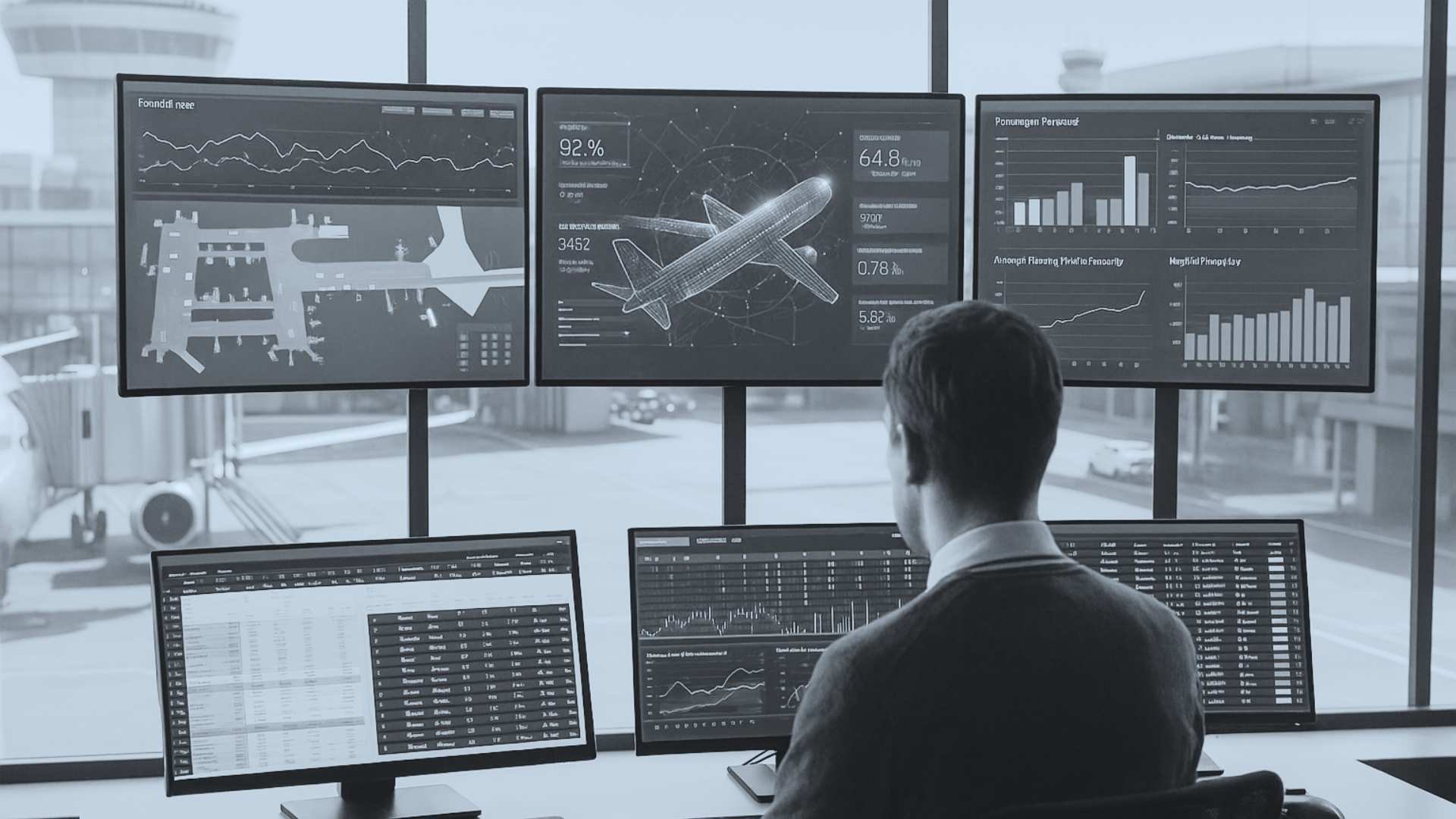Let us help you improve your passenger experience
Book a free demo today and take the first step toward a smarter, more connected airport experience.


Passenger experience is no longer just a measure of convenience. It’s a key driver of airport success - influencing traveler loyalty, commercial revenue, and operational performance. When passengers feel informed, in control, and supported, they arrive earlier, spend more airside, and are more likely to return.
But even a single disruption, whether at check-in, security, or baggage reclaim, can unravel the entire airport experience. Therefore, understanding how to improve airport passenger experience goes beyond surface-level service. It requires designing journeys that are predictable, efficient, and consistent from curb to gate. When airports proactively reduce friction, they create smoother flows and improve outcomes across operations, commercial touchpoints, and traveler satisfaction.
Your might also want to read: How aviation data analytics improves your airport operations
From the moment a passenger enters the terminal to the time they retrieve their baggage - every interaction contributes to the overall airport passenger experience. And as global passenger volumes rise, so do expectations. Airports must adopt scalable, intelligent solutions that improve communication, reduce queues, and optimize resources - without requiring large-scale infrastructure changes.
Forward-thinking airports are already making passenger experience a central priority. With modern travelers seeking seamless, more personalized journeys, prioritizing the passenger experience airport-wide delivers both immediate operational benefits and long-term strategic growth.
Your might also want to read: 4 reasons your airport needs to embrace new technologies in 2025
We’ve explored why passenger experience matters - now, to underline its importance, let’s take a closer look at the challenges airports face when that focus is missing.
Improving airport passenger experience means first understanding where passengers encounter the most stress. From aging infrastructure to systems that don’t always interact smoothly today’s airports face a host of friction points that undermine the traveler journey:
You might also want to read: Airport passenger flow: What is it, and how do you manage it?
These aren’t just operational inefficiencies - they’re emotional flashpoints for passengers, where anxiety, confusion, and dissatisfaction tend to peak. Even a small breakdown in one area can cascade into a full-blown disruption, affecting both traveler confidence and staff coordination.
When the airport passenger experience feels unpredictable, travelers lose trust—and operators lose control. These issues don’t just create frustration; they impact airline on-time performance, reduce non-aeronautical revenue, and damage brand perception. Delays or inefficiencies in one department often spread across the rest of the airport, highlighting the urgent need for connected, predictive solutions.
That’s why improving airport passenger experience must be a strategic priority across global hubs. A well-managed journey builds loyalty and trust, while poor experiences can lead to negative reviews, decreased customer return rates, and lost commercial revenue.
You might also want to read: Airport Operations 101
Understanding how to improve passenger experience in airports means implementing strategies that both travelers and operators benefit from.
Letting passengers book time slots for security or passport control helps reduce wait times, lowers stress, and increases dwell time. Travelers benefit from more control over their schedule, while airports gain predictability and smoother flows across checkpoints. Better Virtual Queuing enables this control while improving satisfaction and driving higher commercial engagement. With real-time capacity data, it reduces congestion and allows for smarter demand management.
Accurate planning is critical to improving airport passenger experience. Better Forecast provides real-time, flight-by-flight predictions that help airport teams anticipate and prepare for passenger volumes. This enables better staff allocation and reduces the risk of delays.
On the arrivals side, Better Baggage uses live flight schedules and baggage handling messages to dynamically allocate reclaim belts. This minimizes chaos in baggage halls, speeds up the exit process, and improves the final leg of the passenger journey.
Gate changes are a major source of disruption and missed connections. Better Stand & Gate empowers airport operators to assign gates dynamically using live data and predictive analytics.
These strategies are all part of Better Airport® - our modular platform that connects every step of the airport journey. Each solution works together to reduce friction, improve flow, and support more coordinated airport operations.
Better Airport® helps airports around the world move from reactive operations to proactive performance - reducing delays, easing passenger stress, and improving overall airport efficiency.
Whether it's flattening demand with Virtual Queuing, improving predictability with Better Forecast, or optimizing gate allocations with Better Stand & Gate, our connected modules give airports the visibility and control they need to deliver a smoother journey - from check-in to baggage reclaim.
Book a demo today and take the first step toward a smarter, more connected airport experience.
Book a free demo today and take the first step toward a smarter, more connected airport experience.



